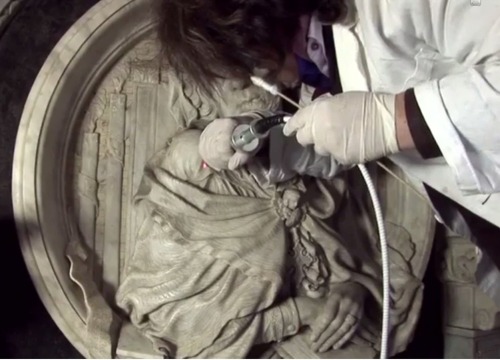Anne de la Pierre's funeral monument (1859), pre restoration
De Fauveau’s mother was her ‘partner in crime’ and inspiration for one of the artist’s best works. The cloister of Florence’s Santa Maria del Carmine Church hosts Fèlicie de Fauveau’s sepulchral monument honoring Madame Anne De Fauveau. Considered one of the most preeminent marble sculptures of the whole nineteenth century, it was inspired by medieval sources and offers a deeply realistic psychological portrait of the artist’s mother. It showcases high relief sculpture, virtuoso carving techniques and ample decorative and anatomical details. Its floral motifs and intricate coat-of-arms are in juxtaposition with the gold-smith qualities of the sculpture’s architectural parts. The monument was severely damaged due to bombings during World War II and the Arno’s flooding in 1966. Additionally, the stratified accumulation of dust and debris have particularly destroyed sculptural details, blackening the entire structure. Due to the nature and delicacy of the original surface, the cleaning process will be carried out gradually with laser and chemical techniques. Conservators: Nike Restauro Opere d’Arte.








